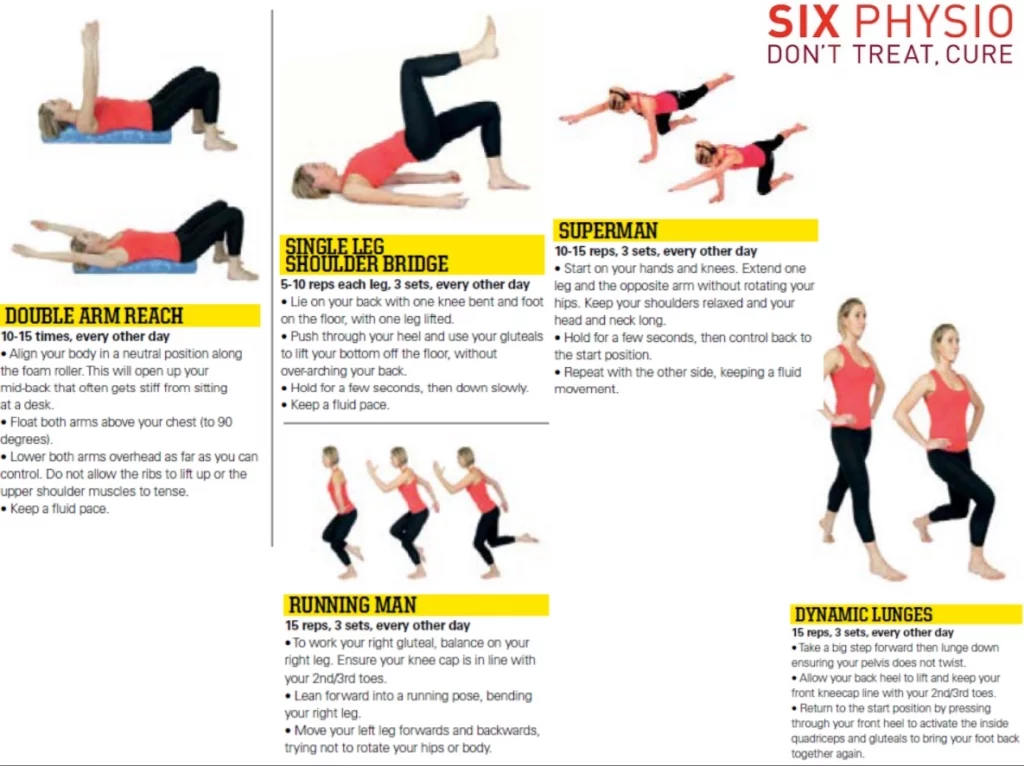Be SMART and use SMART goals to avoid injury, by Katie Hill TriathlonPlus Jan Feb 2017
A colleague at work has just completed a sprint triathlon and this has inspired you – I mean, how hard can it be? However, you have a highly-pressurised job and very little spare time. How do you make sure that you are being smart with your time? This article will teach you some ways to get you from desk to triathlon as safely and efficiently as possible.
The benefits of triathlon are huge; all the research agrees that a triathlon of any distance has immense health benefits and encourages you to lead a healthy and well-balanced lifestyle. However, some people find the ‘3 disciplines’ of triathlon a daunting prospect – you have to be good at three things!? The silver lining here is that you will definitely have a varied and exciting training programme. There are a number of different distances as well to make this prospect a little more realistic.
But where do you start…?
A really important step in getting to a triathlon is to set goals. This enables you to chart your progress as well as breaking the ‘desk to triathlon’ journey into bitesize chunks. I’ve written this article according to the SMART criteria, which helps to describe how to set your goals.
SPECIFIC:
Make your goals specific and clear. The perfect way to ensure your training is relevant and focused is by joining a triathlon club. With over 500 registered triathlon clubs in Britain, you are never far from one! With the increasing popularity and recognised health benefits, the clubs strive to cater for everyone’s level of skill, including absolute beginners (hopefully you’ll meet someone starting around the same time?!). Membership is much cheaper than joining the gym and there is much more interaction and fun (social meets are just as important as training sessions for some!)
For those that are really keen, I recommend seeking as much advice about equipment and technique as possible. This may involve having a professional bike fit or running assessment. Due to the nature of triathlon involving sustained and repetitive movements, there is a risk of developing an overuse injury if you are not careful with your technique. Although it may seem like an added cost, it’s a small price to pay if injury is kept at bay!
MEASURABLE
Make your training measurable by creating a training programme. There are lots out there, so make sure you look around and choose one that is most achievable for you. Undertaking a well-balanced training schedule will give you structure, optimise performance and decrease risk of injury. It will allow you to chart how you are progressing, which will give added motivation. Now you can get involved with Strava and compare (or show off) your ever improving times with your colleagues in the office!
But, remember to keep perspective and think of the overall goal. I am a big believer in the ‘better than rule’. This means that if you can’t do the exact training session you had intended to do, then choose the next best option for you. Don’t be afraid to deviate from the plan or even miss the odd session. You are doing this for yourself, so be kind to yourself. Starting a training programme that you follow when you can, is better than not doing it at all!
ACHIEVABLE
Training should push you, but it must be achievable. Make sure your training programme is gradual and includes steady progressions in each of the three disciplines. This will allow your body to adapt and condition to the training demands, which will make your training sustainable and reduce the risk of injury.
Strength and conditioning is a vital, but often neglected part of your programme. The Brownlee brothers aren’t running, swimming, or cycling every day. They spend time in the gym ensuring their muscles and joints are strong, stable and flexible enough to withstand the pressures of an ever-increasing training regime. This is of the utmost importance for any athlete, whether just starting out to going for a world record attempt. I have suggested 5 exercises with this article that are relevant for all three disciplines to ensure you are keeping your body in good shape and reducing your risk of injury.
On this note, if you do start to experience an injury then these are always best addressed sooner rather than later to ensure that you stay on course to achieve your goal.
REALISTIC
Choose a triathlon that is realistic and sensible for you. You don’t need to spend hours every day training in order to complete a race. If you choose a shorter distance (i.e. super sprint or sprint), training around four to six hours a week could be enough. If time is an issue; be as efficient as possible by fitting training into your existing schedule. Why not try cycling or running to work? Go swimming or attend a Pilates class at lunch? Pilates has been shown to be a powerful cross training tool. Get your friends involved to make it sociable, more enjoyable and more likely that you will attend!
TIME RELATED
Take the plunge and book a race! This will provide motivation and help you be accountable. Make sure you give yourself enough time to prepare both physically and mentally, using the principles discussed above. Perhaps watch a race to give you inspiration. Give yourself a SMART GOAL for 2017.
But remember, enjoy the challenge and the journey towards it!
Good luck!


